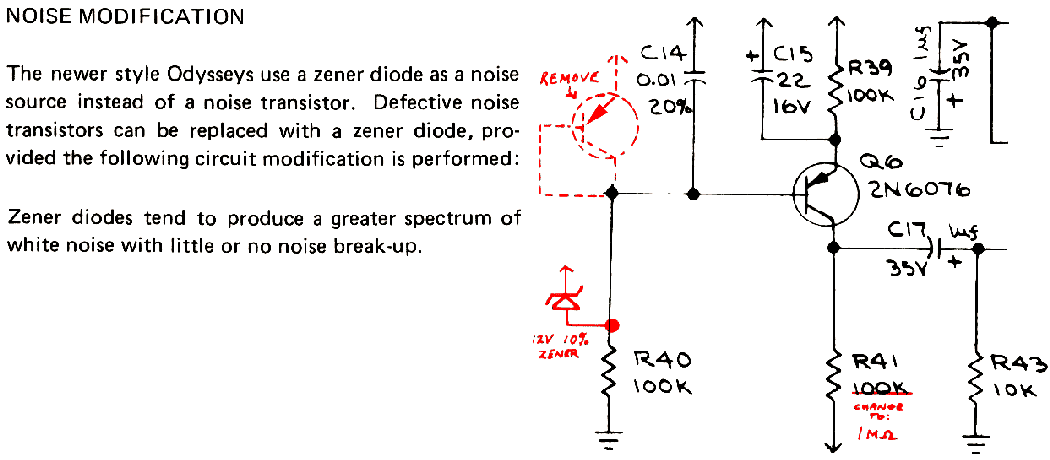leigh
Well-known member
clintrubber said:Remains puzzling... if this topology is flawed then it wouldn't be widely used for this kind of synth-application... reported problems for other synths would have been more widespread... Possibly the dimensioning then, as suggested here above?
Agreed that it's puzzling, and is likely not fundamentally flawed so much as subject to idiosyncracies in the parts. For starters, the whole approach of generating noise through reverse-biased transistors always has the "transistor selected for best noise" caveat.
I also wonder if it's a technique that worked passably well with through-hole parts, but that has some issues when moved to the scale of SMT parts. No idea... (is that what you meant by an issue with "the dimensioning"?).
As for other common noise generation methods, Arp supposedly moved from using transistors to zener diodes for the noise source in the Odyssey... if I rebuild the whole sub-circuit, I'll give this a try as well:




